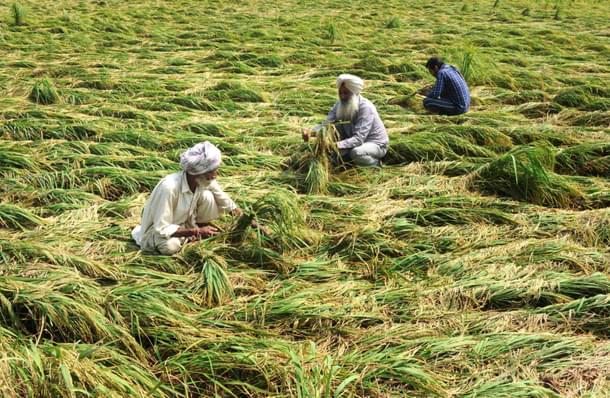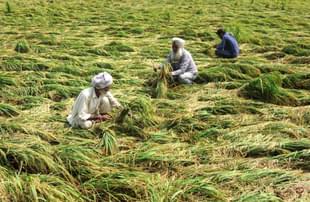Ideas
How Marginal Farmers Can Be Freed From The Subsidy Stranglehold
S Raghavan
Jan 08, 2019, 01:57 PM | Updated 01:56 PM IST
Save & read from anywhere!
Bookmark stories for easy access on any device or the Swarajya app.


The current efforts of many non-governmental organisations (NGOs) in the agriculture space are focused on teaching farmers about good agricultural practices or render them some financial assistance to practise agriculture.
Such acts benefit mid-sized landowning farmers who can practise farming albeit some difficulties. Large land-owning farmers have become wealthy with agriculture and have a ready market in the government, which buys for distribution through fair price shops across the country.
Therefore, the real distress is faced by small marginal farmers, who are left to fend for themselves. Government sources say, they comprise over 95 per cent of the farming community. The average plot size of this farmer is about 1 to 2 hectares. Yet this group has consistently been left out of policy-making that would ensure they are given a fair chance at success.
The marginal farmers live with on fragmented lands, in perpetual indebtedness, buy poor quality seeds, depend only on rain-fed irrigation and give in to intermediaries due to lack of marketing ability. This makes them incapable of practising farming independently and it is a nightmare to sustain their family.
Loans from banks do not come quickly. Unscrupulous money lenders fill this gap, adding to their misery. Some clever money lenders have structured their business such that they lend money to farmers and collect the produce, especially vegetables and off set their loans by determining the price of the produce. For other crops, money lenders provide finance, and apply pressure when the farmer defaults, and there are a rising number of farmer suicides all over the country.
Uplifting these farmers is the real challenge. Most do not understand the depth of misery these farmers find themselves in, and the abject lack of support and resources available to them.
Forcing farmers to depend on doles or subsidies or increased minimum support price are said to be futile exercises. Research by economist Padma Shri Ashok Gulati and his colleagues of the think tank Indian Council for Research on International Economic Relations (ICRIER) claims that governments have raised wasteful input subsidies over the years, which in turn, have virtually turned the tap off for new investment. It has had the effect of choking off agricultural growth and slowing poverty reduction; it adds, “if that committee’s report is accepted, the coffers of the government will be available for investment in agriculture”.
Waiting for loan waivers has become a politicised weapon for farmers and politicians. Politicians are parading farmers in huge numbers to express distress and gain political leverage. Farmers have given in, and, as witnessed recently, have taken a position to blackmail the government. It is taking agriculture down a petrifying path that relegates the marginal farmer to the bottom of the priority list.
Investment in agriculture is essential, and money in the form of doles or help from NGOs is not investment. For-profit initiatives only can induce investments in agriculture as they generate a challenge to lower the costs, improve productivity, increase profitability, improve capital efficiency and, more importantly, induce accountability via payback to investors.
There are much better financial options today – such as crowd-funding – that can render better interest payments than banks fixed deposit scheme. Back of the envelope calculation in Nattampudur, a village near Trichy that we conducted has established the math to show a profit after a year of operation without a gestation time and without subsidy credit.
Proof of the profitability of farming is abundant in the way the large farmers operate. They thrive on agriculture, benefit from I-T exemption, have banks that are willing to lend them money on favourable terms and have government buying schemes that support onward distribution of their produce to fair price shops across the country.
Such farm owners are very wealthy and enjoy great political clout in their regions. They have access to advanced technology, right from purchasing quality seed to irrigating their lands and protecting their crops. They have abundant labour to harvest produce and solid infrastructure (own or government-run) to store produce that is ready for market consumption. Therefore, if we have the right tools, resources and infrastructure in place – the big question is, how can the small, marginal farmer also benefit from all this?
The answer lies in pooling of the lands of these marginal farmers in a village and leveraging corporate principles to run a profitable operation. There are several young people educated in the cities or even outside of India, who are keen to flex their entrepreneurial muscle to help make agriculture more profitable and help the small farmer.
They can be incentivised via a proper business model structure, to collaborate with farmers to practise agriculture with technology and capital management. Persuading these farmers to pool their lands is a tough call – they are, not surprisingly, highly sceptical people seeking to steal their only asset, a small piece of arable land.
However, if we can find a transparent way to assure them of the benefits of pooling land, this will create large tracts that enable economies of scale in cultivation, harvesting and distribution.
The experts in agriculture and management professionals from the entrepreneur side can transform this opportunity to a path-breaking outcome. The larger outcome of this principle can turn agriculture into an industry, where innovations in all segments of agriculture can be gainfully applied and benefited from.
Imagine this – if entrepreneurs and farmers can collaborate within a legal framework such as a farmer producer organisation, they can cultivate much bigger tracts of land. They can plan crops, leverage the owner-farmer to work in the fields as he/she has done for generations, leverage cattle and other livestock to aid organic farming or open other streams of revenue for the farmer producer organisation.
In no time, they can establish a self-sustaining enterprise that does not need freebies from the government. The government can apply investment and resources to building infrastructure that improves connectivity between villages, towns and cities. The government can help connect water bodies across villages to better utilise rain waters. The government can ensure that all produce is collected efficiently and transported to markets and sold under fair market practices.
There is surely a way out of the agrarian crisis if these proposals can be executed.
The author was director with the Indian Oil Corporation (IBP Unit).





